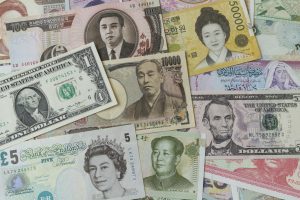The cardinal principle in international politics that “there are neither permanent friends nor permanent enemies, but only permanent interests” defines this type of diplomacy.
The ongoing U.S.-China tensions entail a balancing act for the Philippines that needs to be pursued to maintain favorable relations with both powers while avoiding overdependence on either. Said act will be influenced by China’s territorial disputes and U.S. allies’ Free and Open Indo-Pacific in the wake of rising geopolitical tensions. The Philippines aims to enhance its strategic significance and maintain its rules-based system in the Indo-Pacific region despite challenges in maintaining an autonomous foreign policy.

Image by vector4stock on Freepik
Philippine President Ferdinand “Bongbong” R. Marcos Jr. emphasized the country’s pursuit of an “independent foreign policy” during his first State of the Nation address in July 2022. The Marcos Jr. administration seems more inclined to adopt a strategic hedge approach bolstered by “strong and multifaceted” partnerships while compartmentalizing its dealings with major powers.
ASEAN’s intra-ASEAN trade has stagnated at 22-23% over the past two decades, mainly due to its shallow integration model, stricter rules of origin, and non-contained nature. ASEAN members must diversify external engagements to achieve economic cohesion, avoid relying solely on economic, security, or political incentives, reevaluate bilateral relations, and create a mechanism to disincentivize failure to reach a consensus. Given that U.S.-China strategic competition has shifted ASEAN’s approach, focusing on diversified unity, centrality, and inclusive development is necessary. The Philippines needs to strategize and maximize this approach while the competition shapes international affairs, leaving the future uncertain.
In September 2022, U.S. President Joe Biden and President Marcos Jr. marked a significant step forward, affirming the U.S. “commitment to enhancing the Philippines” defense capability. In May 2023, they reiterated their commitment to remain “ironclad,” including in the disputed South China Sea. Prior, a U.S.-Philippines 2+2 Ministerial Dialogue was concluded with a joint statement committing to modernizing U.S.-Philippines cooperation and enhancing economic engagement and people-to-people ties focused on counterterrorism, humanitarian response, and interoperability with U.S. forces. This has crucial implications for the Philippines’ defense capabilities in response to natural disasters and maritime security threats. The statement also mentions how China is not complying with a legally binding international ruling from 2016, which determined China’s “nine-dash line” claims in the Spratly Islands were unlawful.
These dialogues led to fast-track discussions on proposed U.S.-Philippines Bilateral Defense Guidelines. It is expected to cover policies on the recent expansion of the Enhanced Defence Cooperation Agreement (EDCA), a bilateral agreement allowing extended deployments of U.S. troops and the construction of more facilities on existing military sites strategically located in the provinces of Cagayan, Zambales, Isabela, and Palawan. Economic cooperation was also discussed, including sending a trade and investment mission to Manila, specifically on the roll-out of 5G telecommunications technology, and launching public-private financing for critical minerals and “smart” power grid development.
With the establishment of the updated EDCA sites, China’s foreign ministry stressed that this move was “uncalled for” and a need to rethink if there was an “increased U.S. military deployment in one country.” Therefore, Philippine-China relations are projected to worsen as the former aligns itself more closely with the U.S., jeopardizing China’s territorial sovereignty. However, President Marcos Jr. still wants to expand ties with China and acknowledges it as the country’s essential trade partner. Both countries signed 14 bilateral agreements covering sectors such as agriculture, infrastructure, development cooperation, maritime security, tourism, and information and communications technology.

Image by vector4stock on Freepik
The Philippines, with its active involvement in regional economic agreements like the Regional Comprehensive Economic Partnership (RCEP) and International Production and Export Financing (IPEF), has expressed interest in joining the Comprehensive and Progressive Agreement for Trans-Pacific Partnership (CPTPP) and manifests a recognition as a middle power supporting free trade principles. To fully benefit from these agreements, the Marcos Jr. administration needs to implement structural reforms, such as improving intellectual property rights enforcement, addressing anti-competitive practices, enhancing labor rights protection, promoting sustainable practices, strengthening transparency and anti-corruption measures, and increasing the utilization of the free trade agreements among local companies.
Trade diversification opportunities can be capitalized on by exploring new markets and expanding trade relations with other Asian and Indo-Pacific neighbors. Japan, a key trading partner in the manufacturing and infrastructure development sectors, can help the Philippines address shared challenges and contribute to regional stability. To further aid the country in preparation for Chinese aggression against Taiwan and the South China Sea, discussions with Japan for an Acquisition and Cross Servicing Agreement and a Visiting Forces Agreement to facilitate military interoperability, arms transfers, and the deployment of Japanese troops are moving ahead.
Maintaining a flexible and independent foreign policy will be challenging in a zero-sum geostrategic situation, specifically when national interests are at risk. The current administration needs to effectively and efficiently allocate the country’s resources vis-à-vis the policy prioritization agenda and the long-term plan for an overall national development and security strategy. The question remains: Can the Marcos Jr. administration’s “independent foreign policy” be realized amidst the U.S.-China tension?
This student blogpost is originally written as an assignment for the course “Asia’s Geoeconomic Landscapes and Public Policy I” offered in the academic year 2023, representing the author’s personal views on the subject. The author was inspired and benefited from a discussion with her classmates, Prof. Shiro Armstrong from the Australian National University’s Crawford School of Public Policy, and Prof. Toshiro Nishizawa from GraSPP.



